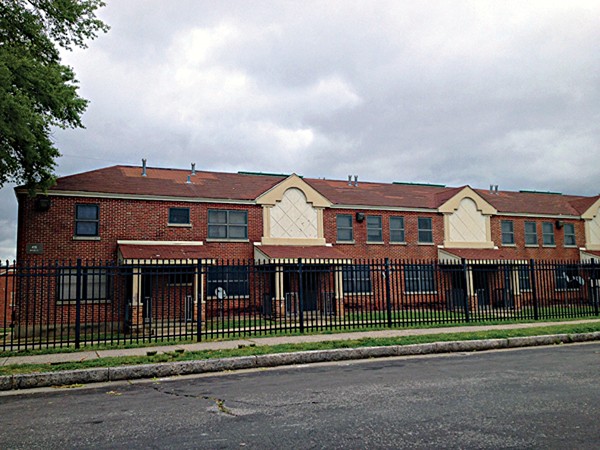Foote Homes doesn’t need to be torn down. It needs rain gardens, trees, individual porches, a new drainage system, updated lighting, and walkways. That’s according to the Vance Avenue Collaborative, a community group trying to save the public housing complex from demolition.
The group held a meeting last week to discuss how Foote Homes can be saved.
City officials will submit an application in September to the U.S. Department of Housing and Urban Development (HUD) to raze Foote Homes’ 57 buildings. HUD denied the city the $30 million grant for the project last year. But that did not deter Robert Lipscomb, the city’s director of Housing and Community Development, who said the process is competitive and that the city would simply try again in 2015.
 Bianca Phillips
Bianca Phillips
Foote Homes
Should the city be selected for the $30 million Hope VI grant this year, the project would require $12.7 million from city taxpayers and $60 million from a private developer. In all, the project would cost $102.7 million, according to a Memphis Housing Authority document.
The city’s plan calls for replacing the aging project with a mixed-income housing development like Legends Park, Cleaborne Pointe, University Place, and others.
The Vance Avenue Collaborative unveiled their alternative plan (called the Vance Avenue Community Transformation Plan) to renovate the Foote Homes complex during a meeting last week at the St. Patrick Center. They believe their plan to save the complex will cost less than the city’s estimates for demolition and building new homes.
The plan would remove the large fence surrounding Foote Homes to increase pedestrian access to the site and diminish its reputation as a “ghetto,” collaborative members said. New sidewalks would be installed around the campus, which would be rich with new green spaces, according to the plan.
Rain gardens would catch storm water and hold it to feed community gardens. Residents could eat or sell the produce grown in the gardens, the plan said. More trees would improve the “micro-climate” at Foote Homes. All of this would reduce litter because “the more beautiful the place is, the more we’ll take care of it,” said a voiceover in a 15-minute video describing the plan last week.
Backyards would be made semi-private. Each residential unit would get its own front porch, and they would be made larger than the existing shared porches. Walls would be painted. Mold would be scraped. Windows and screens and doors would be replaced. And it all comes with a price tag of $63 million.
“Our plan starts with the assumption that Foote Homes is not a problem to be eliminated but an incredible asset that could be even more positive and more uplifting with a little bit of work,” said Kenneth Reardon, a collaborative member and University of Memphis planning professor who has been working on the alternative project for years.
Should the city’s plan move forward, current Foote Homes residents would be forced to move before demolition begins. And they won’t be invited back to the development once it reopens. Instead, current residents will be given a Housing Choice Voucher (formerly known as a Section 8 voucher) for housing assistance, which will allow them to move into mixed-income or private housing located all over the city.
“If [Dr. Martin Luther King Jr.] were alive today, with all the displacement we’re seeing from the other housing projects, especially given that he was assassinated in Memphis, how would he feel about that?” asked collaborative member Gil Carter III.